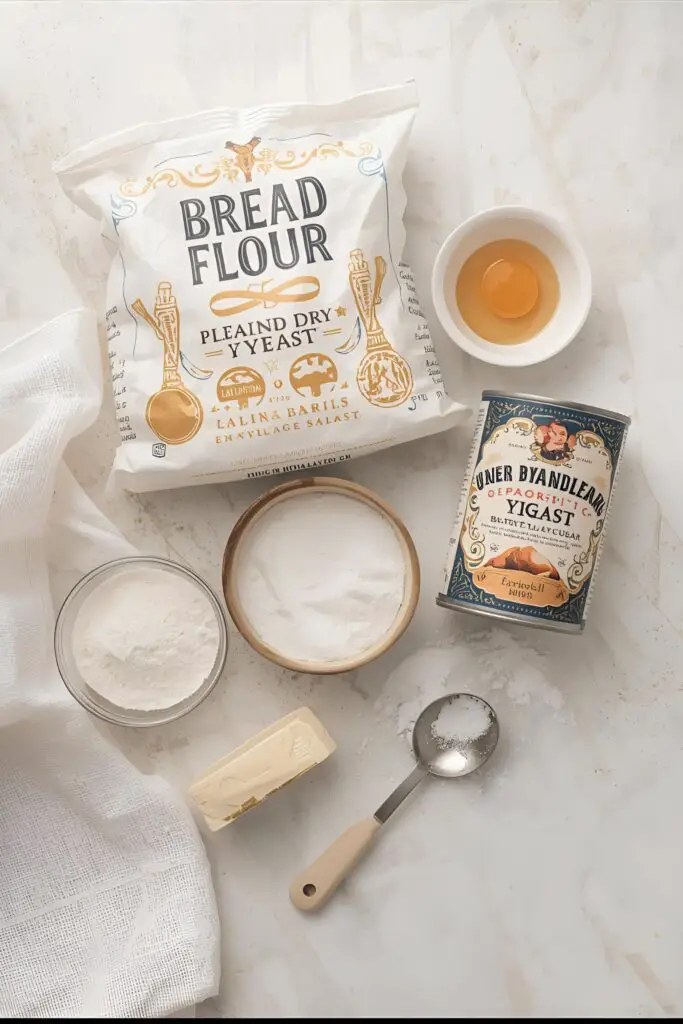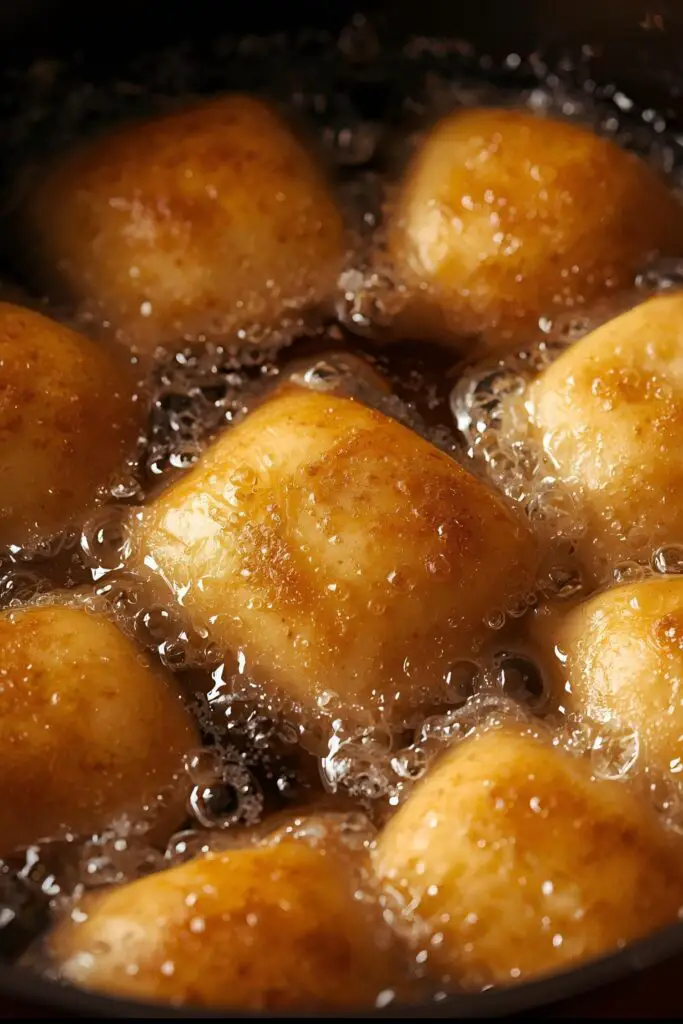How to Make Beignets at Home (And Survive the Powdered Sugar Explosion)
Let’s be honest, you’ve dreamt of this moment. You’ve seen the pictures, the movies—piles of golden-fried pillows buried under what can only be described as a blizzard of powdered sugar. You want that New Orleans magic in your own kitchen, but the idea of yeast dough and a pot of hot oil is giving you mild anxiety. What if I told you that learning how to make beignets is not only doable but also ridiculously fun? You’re about to transform your kitchen into a French Quarter café, minus the long lines and questionable street musicians. Let’s get ready to make some edible clouds of pure joy.
Why This Beignet Recipe Is Your New Weekend Obsession
So, why go through the “trouble” of making these from scratch? Because hot, fresh beignets are a transcendent experience that no store-bought donut can ever replicate. Imagine biting into a light, airy, pillowy square of fried dough that’s delicately chewy on the inside and perfectly golden on the outside. They are basically the sophisticated older cousin of the humble donut. Making them at home means you can eat them the second they come out of the fryer, which is, IMO, the only way they should be consumed. Plus, serving a heaping plate of these for brunch? You’ll look like a culinary rockstar. They’ll never know how easy it was. Wink.
The Cast of Characters: Your Ingredient Lineup
The list is surprisingly simple and full of pantry staples. No need to hunt down anything exotic.
- Warm Water: 1 ½ cups. Crucial for waking up the yeast. Aim for a “nice warm bath” temperature, around 105-115°F (40-46°C).
- Granulated Sugar: ½ cup. Food for the yeast and sweetness for the dough.
- Active Dry Yeast: One packet, or 2 ¼ teaspoons. The magic that makes them puff.
- Evaporated Milk: ¾ cup. This is a classic New Orleans trick! It adds a subtle richness that regular milk just can’t match.
- Egg: Just 1 large egg, beaten. It helps bind everything together.
- Salt: 1 ¼ teaspoons. You need it to balance the sweetness. Don’t skip it!
- Bread Flour: 7 cups, plus more for dusting. Yes, bread flour! It gives the beignets that signature light-but-chewy texture.
- Shortening, melted: ½ cup. You can also use unsalted butter, but shortening is traditional.
- Frying Oil: About 4-6 cups of a neutral oil with a high smoke point, like canola, vegetable, or peanut oil.
- Powdered Sugar: An obscene amount. Seriously. When you think you have enough, add more.
Your Beignet-Making Toolkit
You don’t need a professional kitchen, but these tools will make you feel like you have one.
- Stand Mixer with a Dough Hook: This is your best friend for this recipe. You can knead by hand, but… why?
- Large Bowl: For letting that glorious dough rise.
- Deep, Heavy-Bottomed Pot or Dutch Oven: Essential for safe and even frying.
- Deep-Fry Thermometer: Non-negotiable. Guessing the oil temperature is the fastest way to sad, greasy beignets.
- Rolling Pin: For rolling out your dough.
- Pizza Cutter or Sharp Knife: The easiest way to cut your beignets into perfect little squares.
- Spider Strainer or Slotted Spoon: For safely fishing your golden pillows out of the hot oil.
- Wire Rack: For letting the beignets drain for a hot second before their powdered sugar bath.
- Sifter or Fine-Mesh Sieve: For creating that beautiful, even snowstorm of sugar.
Let’s Do This: Step-by-Step to Beignet Bliss
Ready to make some magic? Follow these steps, and you’ll be in powdered sugar heaven in no time.
H3: Step 1: Wake Up the Yeast Beast
In the large bowl of your stand mixer, combine the warm water, granulated sugar, and yeast. Give it a little whisk and then walk away for 5-10 minutes. When you come back, it should be foamy and bubbly. If it looks exactly the same, your yeast is dead. Pour it out, have a moment of silence, and start again with a fresh packet.
H3: Step 2: Mix That Shaggy Dough
Once your yeast is alive and kicking, add the evaporated milk, egg, and salt to the bowl. Give it a quick mix. Now, with the mixer on low speed, gradually add the 7 cups of bread flour and the melted shortening. Mix until a shaggy, sticky dough forms. It won’t look pretty, and that’s okay.
H3: Step 3: Knead and First Rise (The Long Nap)
Switch to the dough hook attachment and knead on medium-low speed for about 5-7 minutes. The dough should become smooth and elastic. It will still be a little sticky. Transfer the dough to a large, lightly oiled bowl, turning it once to coat. Cover the bowl tightly with plastic wrap and place it in the refrigerator for at least 2 hours, or up to 24 hours. Yes, this is a cold rise, and it develops amazing flavor!
H4: Step 4: Roll and Cut Your Pillows
When you’re ready to fry, turn the chilled dough out onto a well-floured surface. Pat it down, then use a rolling pin to roll it into a large rectangle about ¼-inch thick. Using a pizza cutter or a sharp knife, cut the dough into 2-inch squares. They don’t have to be perfect! Rustic is part of their charm.
H5: Step 5: The Hot Oil Jacuzzi
Pour your oil into your Dutch oven or deep pot until it’s about 2-3 inches deep. Attach your deep-fry thermometer and heat the oil over medium-high heat until it reaches 360-370°F (182-188°C). This is the magic temperature window.
Carefully drop 3-4 squares of dough into the hot oil. Don’t overcrowd the pot! They will puff up almost instantly. Fry for about 1-2 minutes per side, flipping them once they are a beautiful deep golden brown.
H6: Step 6: Drain and Drown in Sugar
Use your spider strainer to remove the beignets from the oil and place them on a wire rack for just a few seconds to drain any excess oil. Then, while they are still hot, transfer them to a deep plate or a paper bag. Generously—and I mean GENEROUSLY—sift powdered sugar all over them. Bury them. Create an avalanche. There’s no such thing as too much.
Calories & Nutritional Info: Let’s Just Not, Okay?
Alright, fine. You asked. Just know that beignets are a treat, a glorious indulgence meant to be enjoyed without guilt. Here’s a rough estimate per beignet (but who eats just one?):
- Calories: Approximately 130-150 kcal
- Fat: Around 6-8g (from the frying, mostly)
- Carbohydrates: Roughly 15-20g
- Sugar: A significant portion of those carbs, and that’s before the sugar avalanche.
- Happiness: Off the charts.
TBH, just enjoy them. You can eat a salad tomorrow.
Common Mistakes to Avoid: Your Guide to Beignet Success
Don’t let these common pitfalls stand between you and fried dough perfection.
- Getting the Oil Temperature Wrong: This is the #1 mistake. Too cold, and your beignets will soak up oil and be greasy. Too hot, and they’ll burn on the outside before the inside is cooked. Use that thermometer!
- Overworking the Dough: Knead until it’s smooth and elastic, but don’t go crazy. Overworked dough leads to tough, not tender, beignets.
- Rolling the Dough Too Thin or Too Thick: Too thin, and they might not puff up as much. Too thick, and the inside might be doughy. Aim for that ¼-inch sweet spot.
- Being Shy with the Powdered Sugar: This is a cardinal sin in the beignet world. The beignet itself isn’t overly sweet, so it needs that snowy blanket of sugar. When in doubt, add more.
Variations & Customizations: Remix Your Beignets
Once you’ve mastered the classic, feel free to play around.
- Chocolate-Dipped Beignets: Forget the sugar and instead dip the hot beignets in a rich, dark chocolate ganache. Or serve the ganache on the side for dipping. Decadent.
- Savory Parmesan & Herb Beignets: Reduce the sugar in the dough to 1 tablespoon. After frying, instead of powdered sugar, toss the hot beignets with grated Parmesan cheese, garlic powder, and finely chopped fresh parsley. Mind. Blown.
- Vegan Beignets: This is surprisingly easy! Use a plant-based milk (like soy or oat) instead of evaporated milk, a flax egg (1 tbsp ground flaxseed + 3 tbsp water) instead of the chicken egg, and vegan butter or coconut oil instead of shortening.
FAQ Section: All Your Pressing Beignet Questions
Got questions? I’ve got answers.
Q1: What’s the real difference between a beignet and a donut?
A: Beignets are essentially the French-style donut. They are typically square-shaped, made from a simple yeasted dough, fried, and piled high with powdered sugar. They don’t have a hole or glazes like many American-style donuts.
Q2: Why are my beignets dense and not light and hollow?
A: This usually happens if the dough didn’t rise properly (dead yeast or not enough time) or if the oil temperature was too low, preventing them from puffing up quickly and creating that hollow center.
Q3: Can I make the dough ahead of time?
A: Yes! This recipe is perfect for it. The dough can be refrigerated for up to 24 hours after the initial mixing and kneading. The cold fermentation actually improves the flavor.
Q4: What’s the best oil for frying beignets?
A: You want a neutral-flavored oil with a high smoke point. Canola, vegetable, cottonseed, or peanut oil are all excellent choices.
Q5: What do beignets taste like?
A: They taste like a light, airy, slightly chewy piece of fried dough. They aren’t very sweet on their own, which is why they are a perfect canvas for all that powdered sugar.
Q6: Can I make beignets in an air fryer?
A: You can, but you won’t get a true beignet. An air fryer will bake them, resulting in something more like a sweet bread roll. The magic of a beignet comes from the deep-frying process that makes them puff and creates that signature texture.
Q7: How do you eat beignets without making a huge mess?
A: You don’t. That’s the point. Embrace the chaos. (But for real, wear dark clothing and don’t inhale when you take a bite.)
Final Thoughts: You Are Now a Beignet Connoisseur
Congratulations! You’ve officially unlocked a new level of weekend brunch mastery. You’ve faced down yeast, conquered hot oil, and created a mountain of sugary perfection. Your home is now your own personal Café du Monde. Go on, pour yourself a café au lait, grab a hot beignet, and prepare for the inevitable sugar coma. You’ve earned it.




